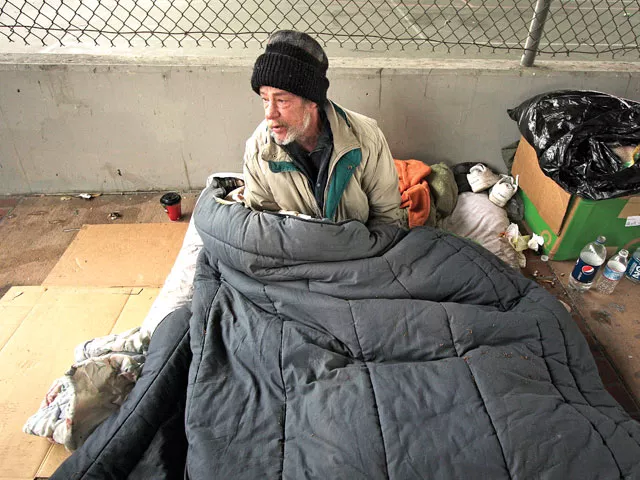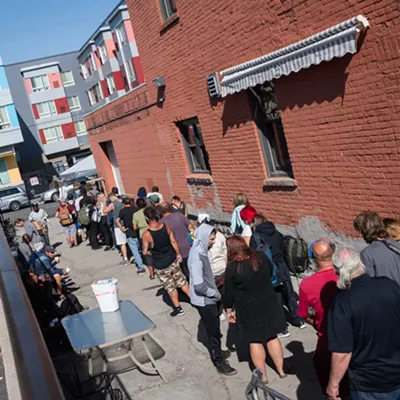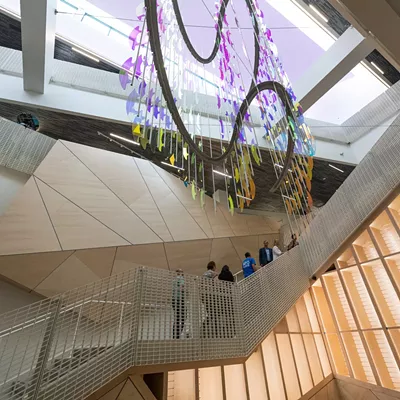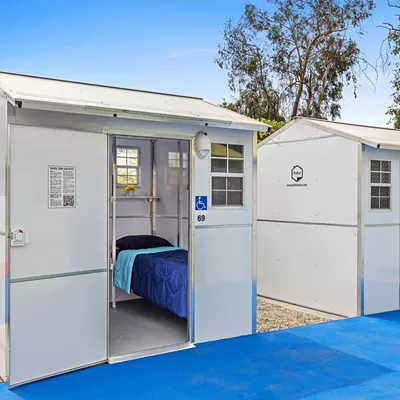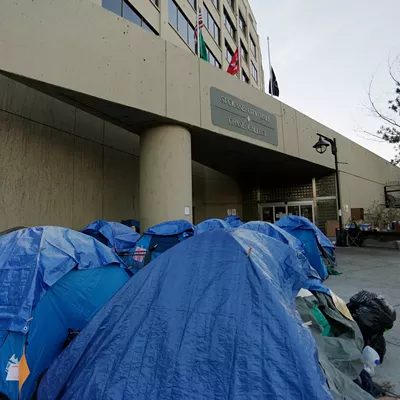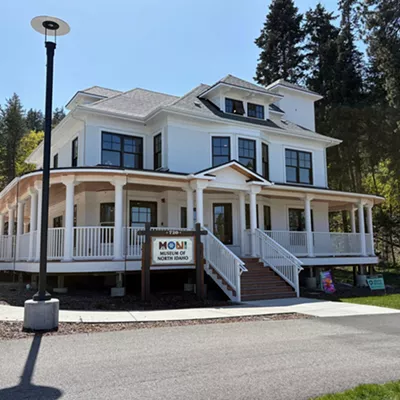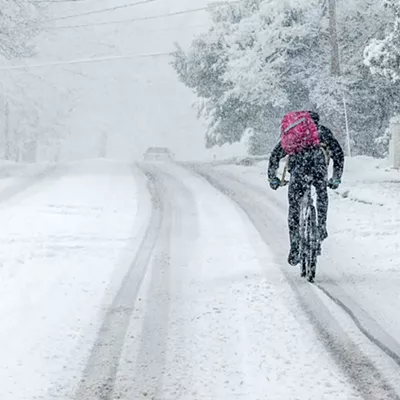As mansions give way to modest houses and then to apartment complexes, a patch of wildland sits within the roar of I-90 on the downslope of Spokane’s South Hill.
In this swatch of scrubby trees and holly leaves, where sidewalks once went somewhere but now just end at a few posted “No Trespassing” signs, sopping blankets and sleeping bags mark where a few people once slept — and perhaps continue to sleep — without a roof, walls or heat. It’s not an uncommon sight in the Inland Northwest: camps abandoned by the homeless, out of sight but everywhere. Hidden in plain view — it’s something that could be said of every homeless person, whether in a shelter, in transitional housing or in his car.
“When I started doing this, people had camps, and it was easier to better their situation if you could go to them,” says Carmen Jacoby, a street outreach member at the Community Health Association of Spokane (CHAS). “Now we can’t find them. Police have been doing a lot of sweeps. People are moving out, away from the city limits, and they’re being more secretive than they were before.”
Every year, usually in the cold of January, Jacoby searches for the unaccounted for and counts them, totaling their numbers for Every One Counts, a countywide tally of Spokane’s homeless. This past January, the group counted more than 1,600 homeless residents of Spokane County. (North Idaho’s count last year revealed an almost 30 percent increase in the homeless population.)
According to Spokane County’s latest count, the number of homeless within the city dropped by almost 20 percent in the past year, while the number outside the city increased by 72 percent. Overall these numbers are showing a decrease, down 10 percent from the previous year. But many are saying this just isn’t true.
“I’m seeing lots of new faces and still seeing the old people,” Jacoby says. “A lot of people have that deer-in-the-headlights look, like, ‘I never thought this would happen to me.’” But it does, and Jacoby says there are “a million” ways someone loses shelter.
“Some by their own bad choice. Some because of their mental illnesses. Addiction, alcohol, drugs. Domestic violence. One thing that turned into four. You lose your job and you think you’re going to get a job any day, any day, any day. Then you get an eviction notice and you move into your car. Then you sell your car,” Jacoby says. “Then what?” “There’s a lot more homeless,” says Bob Peeler, a family development specialist with the
Spokane Neighborhood Action Program (SNAP). “There’s the new homeless and the people who are just falling through the cracks.”
One of the cracks that almost everyone mentions was the closing of the Otis Hotel, the Morrison and the Martindale. Those three buildings provided 270 single-resident occupancy rooms, most of them affordable for those on the state’s “General Assistance Unemployable” program, which gives a scant $339 a month.
“What type of housing can you afford for $339? Those were places that would take you when no one else would take you,” says Peeler. “They had a lot of flaws, but they took everybody.”
Peeler says one simple solution to this complicated problem would be the establishment of a “centralized clearinghouse,” where homeless people can go to one location or one Website and find a place to sleep. He says this would especially help with families.
“If you’re a homeless family tonight, you’d be hard-pressed to find a place to stay,” Peeler says. SNAP provides space for 45 families, but it’s still not enough. “We’re turning away 20 families [a night] because we just can’t find a place for them.”
Spokane’s “10-year plan to end homelessness,” the goal of which is cut homelessness numbers in half by 2015, calls for such a system. But to be successful, says Barry Pfundt, an attorney with the Northwest Justice Project, we need one very specific thing:
“Housing for the very poor,” Pfundt says. “The housing for the real poor folks is something we just we don’t have.”
Pfundt, who works predominantly on housing and public benefit issues, says he recently worked with a wheelchair-bound woman prescribed to 24 different medications who had received an eviction notice. The day her locks were supposed to be changed, she was in the hospital, having just suffered a stroke.
“About 80 percent of low-income people can’t get legal assistance for problems that affect basic needs,” Pfundt says, adding that the Justice Project helps fill that hole.
“When you were a kid, what did we say a human needed to survive? What three things?” he asks. “I try to provide — everyday — one of these three things that even a child knows is needed to survive. … Shelter is just seen in our society as something we don’t need to survive. I just don’t understand that.”

